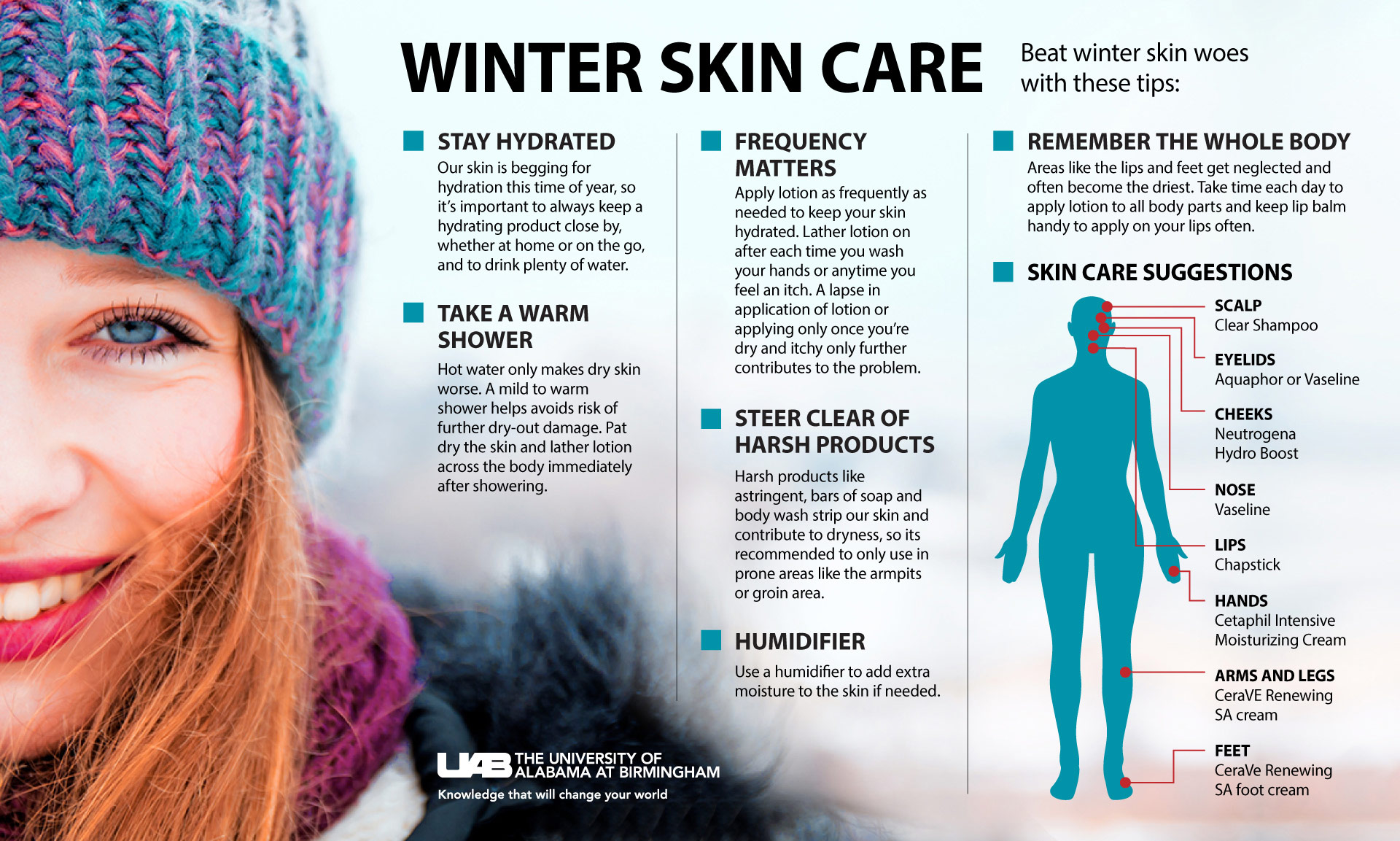 This time of year can hurt — literally. From wind to snow, the effects of bitter winter weather take a toll on the skin.
This time of year can hurt — literally. From wind to snow, the effects of bitter winter weather take a toll on the skin.
During this season, skin experiences all kinds of dryness, from chapped hands and lips to dry cheeks, eyelids and arms. Holly Gunn, M.D., medical director of UAB’s Cosmetic Dermatology and Laser Clinic and assistant professor in UAB’s Department of Dermatology, tackles some common skincare myths and shares tips that will help beat winter skin woes.
Q: What is the culprit for dry and irritated skin during the winter?
Gunn: Extreme temperatures on both ends of the spectrum are the primary problem. We are exposed to freezing temperatures and harsh wind outdoors. Once inside, we crank the heat on high or turn the shower to full heat to shock our chill away. Whether hot or cold, both temperature extremes contribute to intense dryness and the itching that accompanies seasonal flaky skin. We are actually doing more long-term damage to our skin by resorting to short-term solutions like blasting the heat, and need to be more mindful about how we can be proactive in hydrating our skin during this season.
Q: What is the difference between hydrating and moisturizing?
Gunn: These terms are often used interchangeably, but they serve different purposes. Hydrating adds moisture back and helps replenish the skin; a good comparison is when you feel better after you have had a glass of water when you’re thirsty. On the other hand, moisturizing helps prevent water loss, so it keeps moisture on top of the skin. Both help treat dryness during the winter season; but when the skin is particularly dry and vulnerable, hydrators are preferable. Be sure to look at labels to see if the product is a hydrator or a moisturizer and which is best for you.
Q: Can lotions cause breakouts?
Gunn: People tend to have a fear of putting lotion on their faces because they’re afraid breakouts will ensue from the cream’s ingredients. That’s a big myth. In fact, by letting our skin dry out, we’re actually causing our skin to be subject to acne outbreaks because healthy, natural oils from our sebaceous glands get trapped under dead skin. This time of year, keeping skin hydrated will help ward off unsightly acne.
Q: What types of products are best to use?
Gunn: Our professional recommendation is to listen to your body. A product that may work great for someone else may not be the best fit for you depending on your skin type, and the frequency in application will vary by person as well. Luckily, a wide range of products are available to help from a preventive and healing perspective during the winter months.
Our rule of thumb when looking for products is ‘the creamier, the better.’ Petroleum-based products like Vaseline or Aquaphor work great all over the body, including on the face due, to their thick, ointment-like consistency. In addition, products like CeraVe SA and Eucerin Advanced Repair work well on the body and face, too.
On the face specifically, look for a hydrator such as Neutrogena Hydro Boost or CeraVe facial cream to put moisture back in, while any traditional ChapStick or lip balm will do fine on the lips. There’s no such thing as being addicted to ChapStick; but try to not lick your lips, as that contributes to dryness.
Here at the Cosmetic Dermatology and Laser Clinic, we also have products developed specifically for UAB, like our UAB Pure Hydration Serum and UAB Gycolix Lotion, to help troubleshoot dry skin. Our team can work with you to determine which product would work best for your specific skin condition and lifestyle during this time of year.